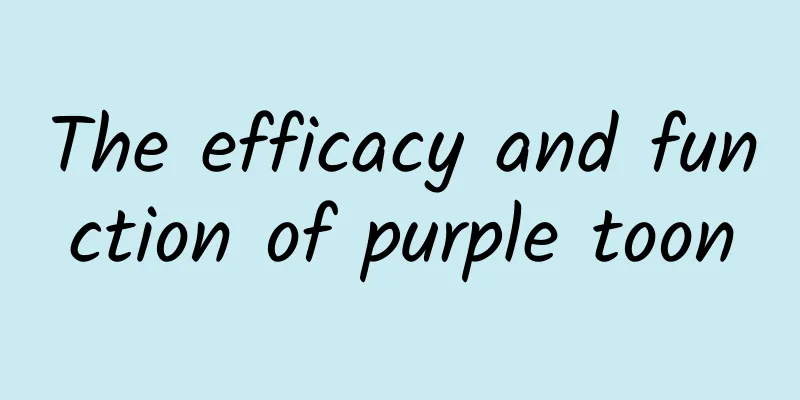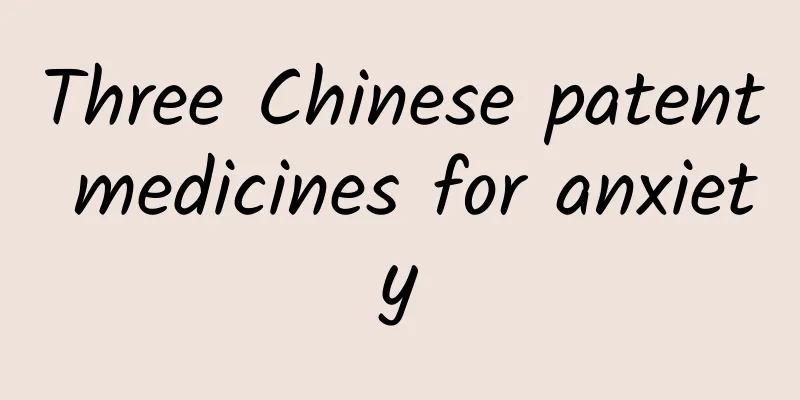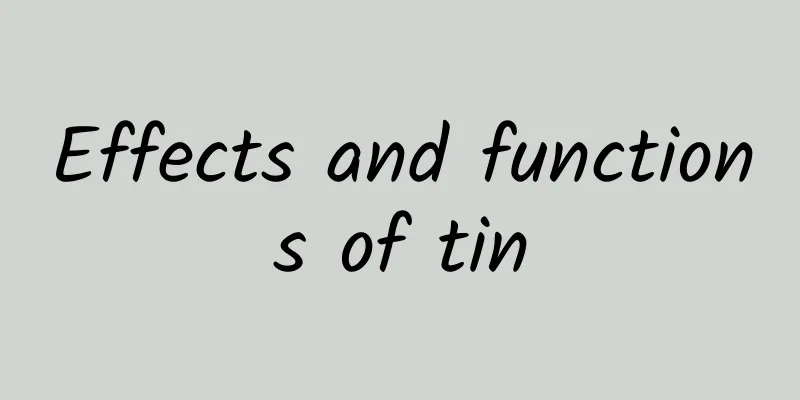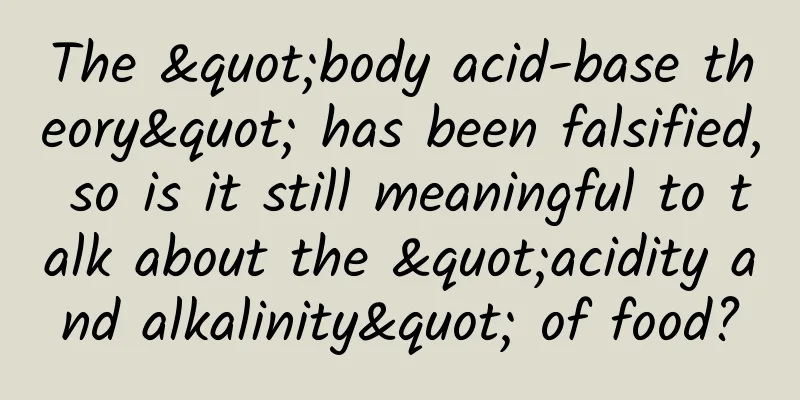The efficacy and function of purple toon

|
The Chinese medicinal herb Purple Toon is already very familiar to most people. But in fact, not many people understand the effects and functions of the traditional Chinese medicine Purple Toon, so let’s talk about it below. [Source] Medicinal material source: root bark, leaves and fruits of the Meliaceae plant Toona sinensis. [Original form] Purple Toona is a tree, up to 15m tall. The bark is gray and peels off in sheets; the twigs are initially thinly pubescent, then become glabrous and brown with pale lenticels. The even-pinnate compound leaves are alternate, 70-90cm long, with long petioles, and the axis and petiole are pubescent; there are 9-12 pairs of leaflets, opposite or alternate; the petiolules are 5-8mm long and pubescent; the leaves are papery, oblong or oblong-ovate, 11-19cm long, 4-7cm wide, with a caudal tip, unequal bases oblique, entire, glabrous on both sides or pubescent along the veins and in the axils of the veins on the back; the flowers are bisexual, with terminal panicles, slightly shorter than the leaves, and pubescent; the sepals are round, with short stiff hairs and ciliates on the outside; the petals are white, elliptic-obovate, about 6mm long, and ciliate; there are 5 stamens, the same length as the petals, and the filaments are purple; the disk and ovary are both pubescent; the ovary is conical, and the stigma is disc-shaped. The capsule is oblong, 2.5-3.5cm long, with many oblong lenticels, and the pericarp is woody. The seeds are oval with membranous wings at both ends. The flowering period is from April to May, and the fruiting period is from May to October. [Habitat distribution] Ecological environment: Grown in hilly mountains or evergreen broad-leaved forests at an altitude of 800-2200m, often cultivated. 【Nature and flavor】 Bitter; sweet; astringent; warm 【Functions and indications】 Drying dampness; stopping bleeding; killing insects. Mainly used for ulcer disease; gastric and intestinal bleeding; metrorrhagia; dysentery; enteritis; skin itching; carbuncle; hemorrhoids [Usage and Dosage] For oral use: decoction, root bark 6-15g, fruit 3-9g, fresh leaves 30-60g. For external use: take appropriate amount, decoct in water for washing; or grind into powder and apply on the affected area. 【Excerpt】 Chinese Materia Medica The above is a brief introduction to Purple Toon. Through this we can understand that Purple Toon contains a variety of nutrients, which are very effective in treating and preventing some diseases. In daily life, everyone can eat it under the guidance of relevant people. |
<<: The efficacy and function of purple bullet leaves
>>: The efficacy and function of Tilia amurensis
Recommend
May 2024 "Science" Rumor List: Will QR codes be used up soon? Can "Physical Exam Magic Tool" improve scores?
The May 2024 "Science" Rumor List is re...
Is it better for Lingzhi to be bitter or not?
Wild Ganoderma lucidum has very good effects. It ...
The efficacy and function of lotus root
The environment is now seriously deteriorating an...
Humanity's Asteroid-Earth Rescue Plan
Under the coastline of Mexico's Yucatan Penin...
Don't be afraid of radiation! It turns out that it has these functions...
Grain Full, the eighth of the 24 solar terms, sym...
The efficacy and function of March flower
Do you know March flower? It is a common Chinese ...
What are the effects of moxibustion on Polygala?
Polygala can be used to treat diseases by acupunc...
What are the medicinal values of knotweed?
Knotweed is a kind of Chinese herbal medicine. Mo...
The new vocational education law is coming! Will your child have a better chance of going to college?
Mixed Knowledge Specially designed to cure confus...
[Exclusive Interview with Min Weijie] With 3.4 million new strokes occurring in my country each year, how dangerous is stroke?
Introduction: Stroke is a very common disease in ...
The efficacy and function of falling below
Most people are already familiar with the fact th...
Can the gut differentiate between real and fake sugar?
Taste buds are not only found on the tongue, but ...
The efficacy and function of corneye grass
Traditional Chinese medicine is very effective in...
The efficacy and function of Kunming Du La
We can often see Kunming Du La in our daily life,...









